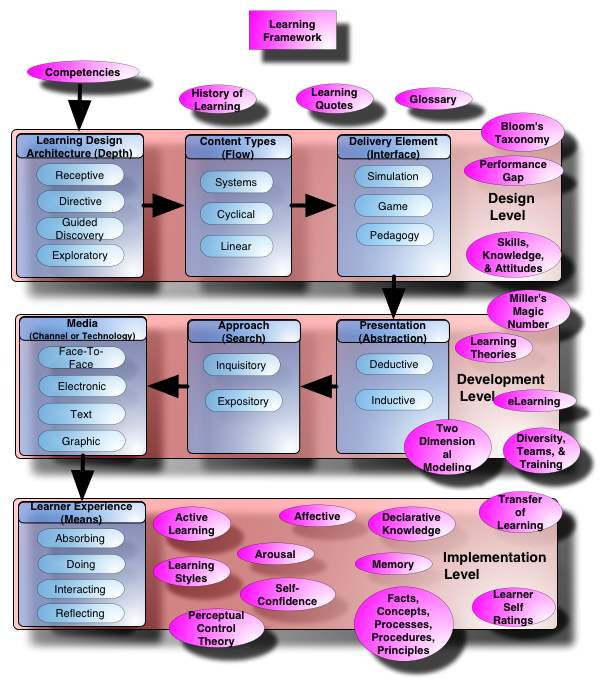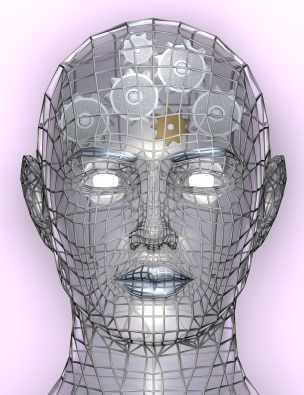Note: This site is moving to KnowledgeJump.com. Please reset your bookmark.
Affective Learning Mode in Instructional Design
The affective mode uses the power of feelings and emotions to engage and reinforce learning. Bloom's Taxonomy also noted the importance of it by including it in the three learning domains along with the cognitive and psychomotor domains.
Feedback and Praise
Explicit feedback on how well the learners' goals or objectives are met improves performance. You want to try to keep the feedback positive as the goal is to reinforce their drive to perform better, not to beat them down in utter defeat. In addition, it is important to not only provide feedback, but also give praise or positive reinforcement that is focused and accurate.
Marzano 1998, p.95) reported an effect size of 0.74 (which indicates that achievement can be raised by 27 percentile points) when praise is used, while providing feedback (p.108) on the type of strategy to use and how well the learner uses it had a effect size of 0.61 (percentile gain of 37 points).
Learning Objectives
Most of us know that providing the learning objectives increases the chance for learning to occur, but if you also allow the learners to adapt the objectives to meet their personal goals, you further increase the chance as they now start to own the objectives.
Marzano 1998, p.94) reported an effect size of 0.97 (which indicates that achievement can be raised by 34 percentile points) when goal specification is used. When students have some control over the learning outcomes, there is an effect size of 1.21 (39 percentile points).
Note that providing a learning objective is similar to cues or scaffolding in that it provides a framework for the learners to build their skills and knowledge upon.
Arousal
Use arousal (emotions) to increase learning. A certain amount of arousal can be a motivator toward change (with change being learning). But too much or too little will have a negative affect. You want a mid-level point of arousal to provide the motivation to change (learn). Too little arousal has an inert affect on the learner, while too much has a hyperactive affect. Each type of learning has its own optimal level of arousal. The more intellectually or cognitive a task is, then the more lower the level of arousal should be so that you do not "overload" the learners. On the opposite end of the scale are tasks that require less mental activities or tasks requiring endurance and persistence. They require higher levels of arousal to fully engage the learners in the learning process. Some learning should be fun, some should be dry, some learning requires an emotional charged classroom, and some require an emotionless state.
Drive
In Daniel Pink's book, Drive (2011), he list three intrinsic motivators:
-
Autonomy gives people real control over their working environment, such as what to work on and how to do it. There are normally two ways — job enlargement and job enrichment.
-
Job enlargement adds a more variety of tasks and duties to the job so that it is not as monotonous. This takes in the breadth of the job. That is, the number of different tasks that an employee performs. This can also be accomplished by job rotation.
-
Job enrichment, on the other hand, adds additional motivators. It adds depth to the job—more control, responsibility, and discretion to how the job is performed. This gives higher order needs to the employee, as opposed to job enlargement which simply gives more variety.
-
-
Mastery is our drive to do things better or learn a new task because we all want to do better. We can do this through formal or informal learning. To help an employee learn a new task, see the section on Situational Leadership.
-
Purpose - We want purpose in our life and life does not stop at work, even if the task is difficult. A main effector of purpose is arousal.
For more information, see Organizational Behavior.
Next Steps
Next chapter: Self, Metacognition, Cognition, Knowledge Systems
Return to the introduction: Introduction: The Three Representational Modes
References
Marzano, Robert J. (1998). A Theory-Based Meta-Analysis of Research on Instruction. Mid-continent Aurora, Colorado: Regional Educational Laboratory. Retrieved from http://eric.ed.gov/?id=ED427087#sthash.iDenYiIh.dpuf
Pink, D. (2011). Drive: The Surprising Truth About What Motivates Us. New York: Riverhead Books.


